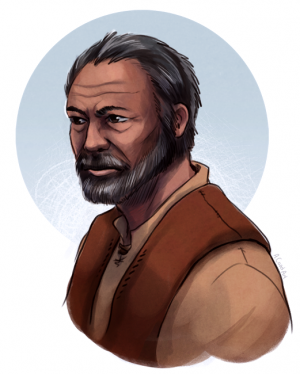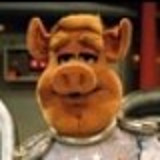OK, this is dumb, but it’s gone through my head a couple times. I’ve seen a few science fiction movies and shows where the people in the spaceship use a gravity assist and lean into the turns like they’re driving NASCAR or riding a roller coaster.
I think they wouldn’t feel the acceleration (vector change) because gravity is doing the acceleration on every molecule and there would be nothing to lean against. I’m often wrong though. Someone smarter than I am have some insight?
EDIT: For what it’s worth, I guess I shouldn’t have used the Expanse clip as it upset some people. I just used it for an example of what I was asking. The question is this: Under little or no thrusters, would you feel a gravity assist? Even a radical one that changes your direction 90 degrees and greatly increases your velocity?
There is missing context for the scene from The Expanse. Alex (the pilot) gets the computer to plot a course using manoeuvring thrusters only, so it is not just a series of gravity assists, there is also manoeuvring to adjust course.
I would say that one of two things (or both) is happening:
- Alex is leaning because of the manoeuvring thrusters firing
- He is leaning like someone trying to steer harder in a video game.
Also, he drinks a fair few beers while hiding behind Cyllene before this, so that would support 2 I think.
No,
It is purely for dramatic effect.
In a gravity assist ( to be technical using a hyperbolic orbit of a large mass to change direction and gain velocity) the object is still following the curvature of space time. So the change in direction is affecting all particles in the object at the same time.
It is the same as people in the ISS orbiting the earth, they do not have to lean in the curve as they are following the curvature in spacetime around the planet. The only difference is one is a hyperbolic orbit (gravity assist) while the other is a
parabolicelliptical orbit (ISS)A parabolic orbit for ISS? So she shoots out into space? ISS has a pretty much circular orbit maybe a little elliptical. Parabolas are open.
Bugger, brain fart for me, you are right. It should have been elliptical.
I’ll correct.
you’re right, you’re still falling with your ship, the gravity well is just different
in clip you provided Kamal is IMO just leaning by himself like people do when playing racing games, THIS IS THE WAY
You’re correct in that he would not feel anything from the assist itself, as the spacecraft is accelerating the same amount as him. However, the key here is that he appears to be dramatically altering his attitude with some kind of RCS thrusters. There’s not much use to that unless he’s firing the main engine, but I’m assuming no main engines were used as they don’t appear to ignite.
The leaning appears to be in response to attitude corrections, and is pretty accurate given the rate of rotation here. The way he’s bracing only makes sense in gravity, so I’ll assume the ship has an AG field (like most standard sci-fi ships).
The only thing that appears to be off its the acceleration at the end …
No anti-grav in the expanse.
I read that scene as him feeling the flow of the ship as they time the gravity assist with minimal thrust since the point of that scene was to run quiet.
The leaning could also even just be that thing gamers do when we lean into a turn in the game by actually leaning in our seat.
Just need a better view of that screen with manual enhance coaster lean
It depends on how strong the gravity source is and how close you get to it. The strength of gravity falls off with distance following the inverse-square law, so different parts of your spaceship can feel different amounts of force acting on them during the manoeuvre. In the clip, there’s a large but weak source of gravity (a moon), so I don’t know how much force the pilot’s going to feel - probably less than he feels because the ship is rotating and generating centrifugal force.
But we’ve got a pretty good example of what I’m talking about over our heads - Earth’s moon is in orbit around us. You could think of that as a gravitational assist manoeuvre that never ends because the moon didn’t gain enough speed to break free of Earth’s gravity. Over a time scale of billions of years, the difference between the gravitational force exerted on the near side and the far side is causing the moon’s rotation to slow down.
For a fictional example that makes it clearer, Larry Niven wrote a story in 1968 titled “There Is A Tide” in which a pilot has a close encounter with a neutron star.
In that Expanse clip Kamal is leaning around just like I am when in combat or hooning in Elite.
In both cases, neither Kamal nor I feel any extra acceleration, sitting in a comfortable 0 or 1 G constantly. Leaning around is just a human thing. (While Kamal is using attitude thrusters to rotate the ship around, assuming the pilot’s station is at or near the ship CoM as would be desireable for a spaceship, he would feel very little acceleration from that)
But in my case, if I were actually pulling these maneuvers in real life, I’d need to be highly trained on a centrifuge, strapped in tightly, wear a G-suit, have some cybernetic enhanchements and still not only moving around in the seat but black out regularly. Ships in Elite can easily pull 20 or 30 G-s, 3 to 4 times more than modern jet fighters can and 30 to 50 times more than any near-future spaceships can. Realistically, with currently viable drive tech (which includes nuclear propulsion schemes from NERVA to nuclear pulse drive) we’re talking about 0.1…0.5 G accelerations for spaceships. Torchships could handle maybe 1 or 2 G-s, comparable to what a street-legal sports car can do.
Gravity is why people lean into turns in the first place.
Those molecules have velocity that’s taking them past whatever body they’re using for a gravity assist. The gravity of that body grabs the vessel and begins to pull it in, being pulled closer to the body generating that acceleration and not simply passing by. The previous vector doesn’t just disappear. All that matters still wants to continue in that direction of travel, including the people. The result is people having to lean into the arc of the assist because their own momentum is still changing to the new vector.
In short. Inertia is a bitch
I am not so sure.
In a gravity assist ( to be technical using a hyperbolic orbit of a large mass to change direction and gain velocity) the object is still following the curvature of space time. So the change in direction is affecting all particles in the object at the same time. There is no external force involve, so inertia does not come into play.
It is the same as people in the ISS orbiting the earth, they do not have to lean in the curve as they are following the curvature in spacetime around the planet. The only difference is one is a hyperbolic orbit (gravity assist) while the other is a
parabolicelliptical orbit (ISS)While the analogy the OP used of leaning into a turn is changing direction and there is a force that is only acting on part of the object (the tires of a car or motorbike).
Only one problem - the relative velocity of the ship is the same. Yes, the ship’s vector got changed, but yours did too. Same reason you don’t feel centripetal force in orbit, despite the constant vector change at 9.8m/s^2…
There is a miniscule amount of tidal forces felt during a gravity assist. Ultimately, the spacecraft and it’s cargo are in freefall. The gravity assist would be barely noticeable. Remember that gravity isn’t a “force” it’s a bending of space changing the direction of a "straight " path. The spacecraft is traveling in a straight line with no other forces acting on it. The space that straight line is passing through is bent around the mass providing the gravity assist.
The Expanse is not a realistic show. I like hard sci-fi, keep hearing the Expanse is ultra-realistic (no ftl, no anti-grav), so I open up a random clip to check it out and what’s the very first thing I see? A guy in a spacesuit standing on a catwalk outside a spaceship under main engine power. Ok, constant 1G acceleration from a magic engine, so far so good… That’s what sci-fi is supposed to be: change one magic thing and one thing only and show the consequences! But then the guy starts space-welding something, and the torch is creating puffs of smoke that effortlessly FLOAT UPWARDS. Whaaat? Ok, I’d understand if the show has to stay within a reasonable budget and can’t afford to film inside a vacuum chamber, but the fucking puffs are already CGI! The lazy no-physics-education artist has failed to seize the one opportunity to show something exotic about living in space: to animate the puffs spreading outward without impedance while falling to the ground.
I’m glad I didn’t watch the show. If I had seen this clip of the guy zooming along from moon to moon in seconds while leaning into the gravity-assist turns, I would have had an aneurysm.
The Expanse is my favorite series and that scene is hands down the dumbest scene in the show. The showrunners actually posted an article before it aired apologizing for it. Well, for the inaccuracies of the gravity assist, not specifically the leaning.
Overall the show is very good about being scientifically accurate compared to other sci-fi. At least when it’s human technology. The alien tech doesn’t play by the rules.
For what it’s worth, the books are far superior to the TV Show, imo.
Most space fiction is science fantasy not science fiction. Made up things like gravity assist are essentially as rational as if they were casting a gravity spell. There’s nothing useful in rationalizing the fiction about how a gravity spell makes you lean. It just looks cool and sells the emotion and experience to the audience.
bro gravity assist is not fiction lmao it’s a real thing.
Most any probe that’s gone out beyond earth’s orbit would be extremely surprised to hear their gravity assists were not real.







